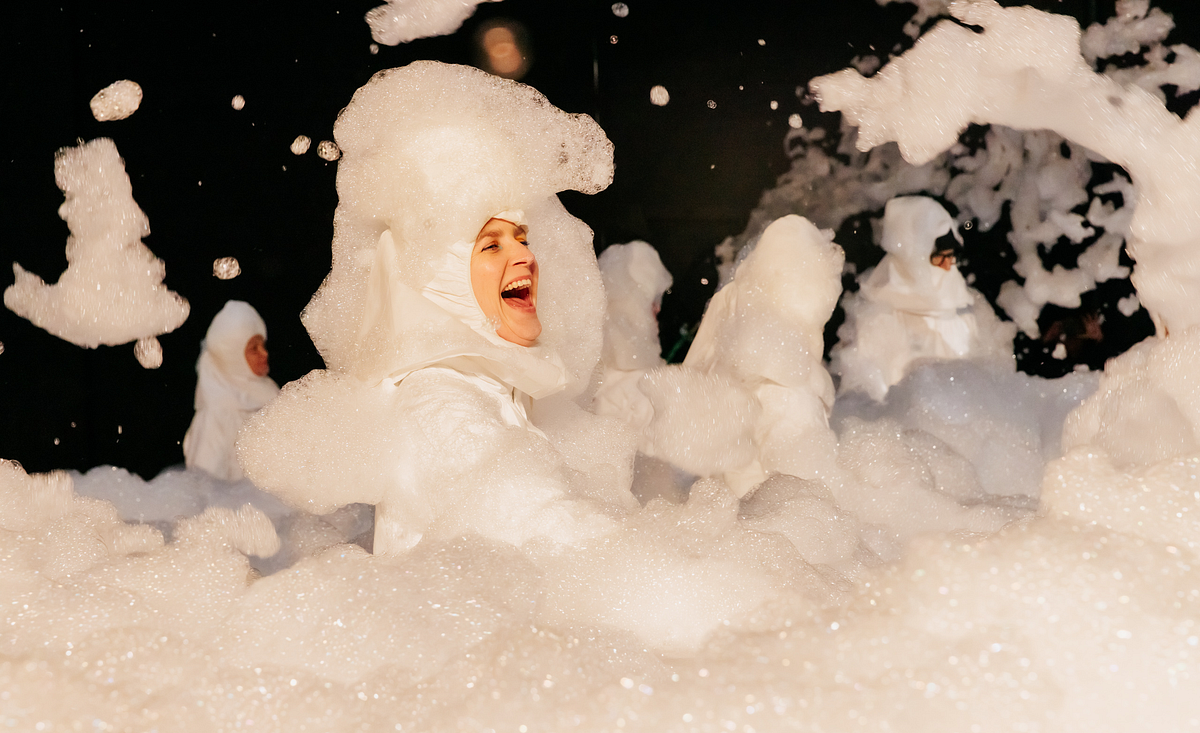If a foam party and a dystopian experiment had a bizarre love child, it might look like Self-Brainwashing.
I recently found myself at Minnesota Street Project because scrolling through other people’s lives apparently isn’t enough — I had to live this one. Bulgarian artist Michail Michailov crafted a performance that’s as clever as it is chaotic.
The space at the Foundation felt huge and ominous, lit only by harsh pools of light, as if we’d wandered into some dystopian underground lair. A rack of pristine white protective suits stood at the ready up front. It felt like we were walking into an avant-garde science fiction movie. A strange formation of white hoods stood in the back, glinting like some kind of militant, formation.
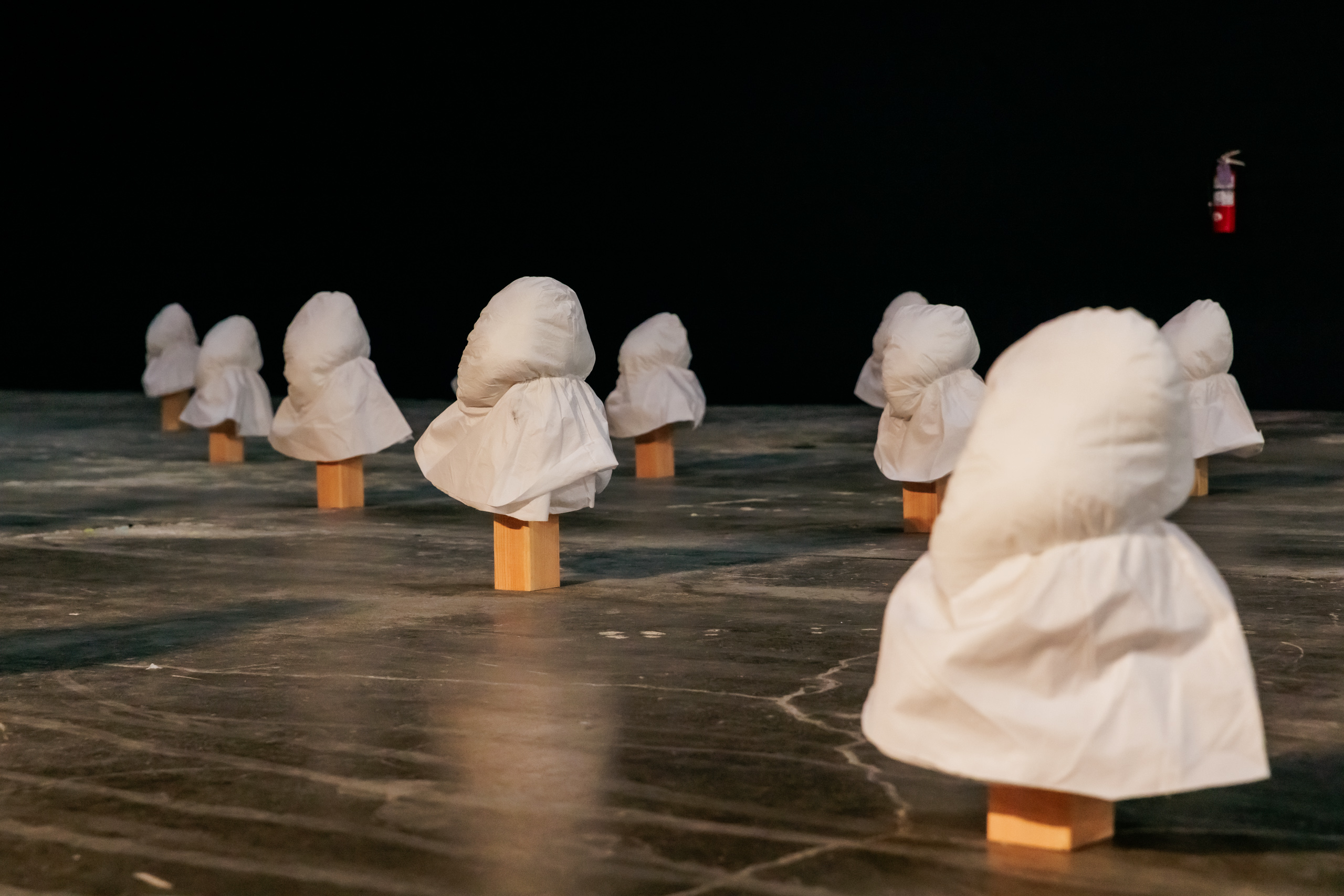
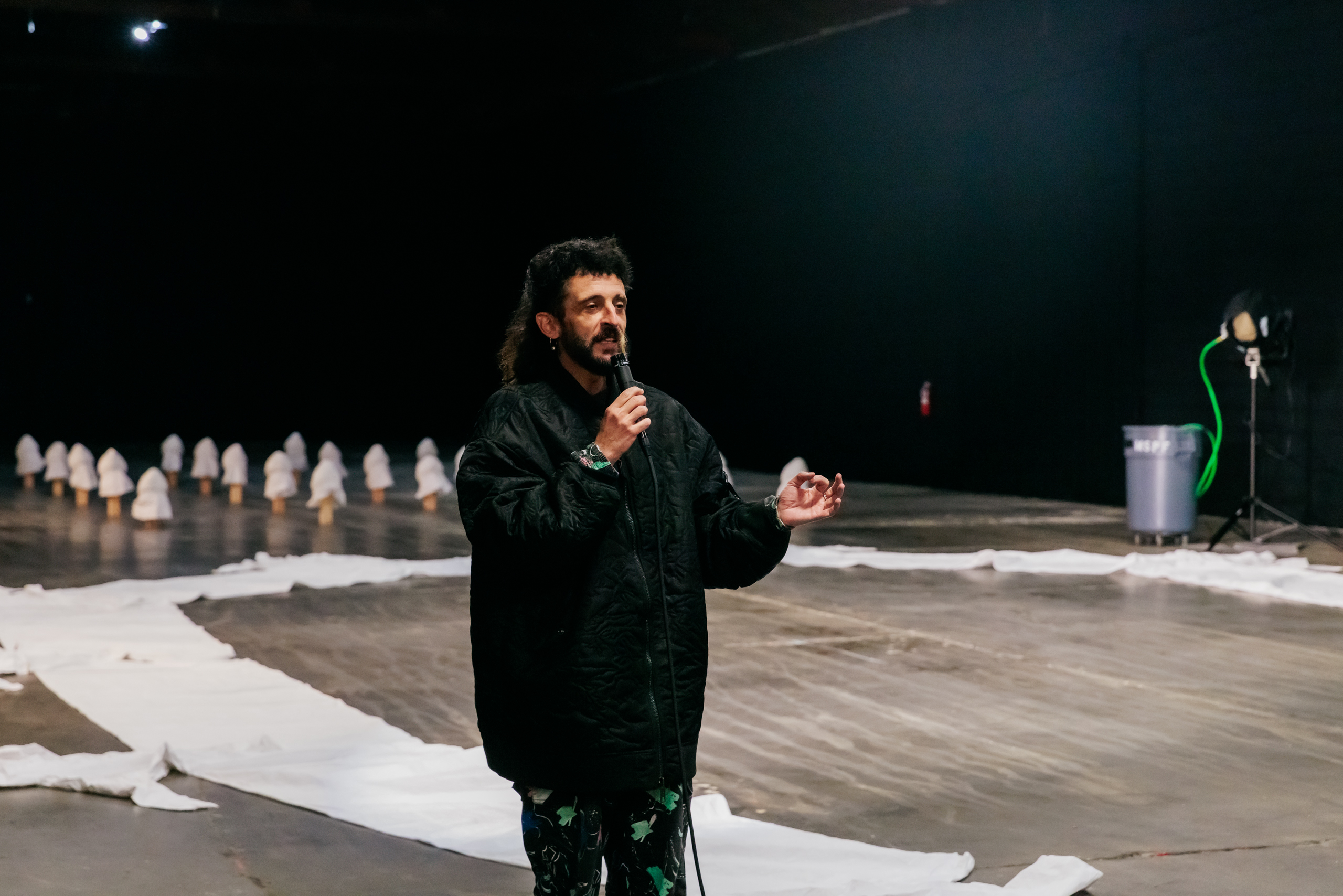
We, the observers, exchanged nervous glances and instinctively took a step back. Was this going to be one of those “art experiences” where someone would end up covered in goop, confused, and unsure of what just happened? (Spoiler alert: yes, it was.)
The DJ, set up in a corner, had that “sound art” look — headphones and a laptop, the kind of setup that tells you some Serious Noise was about to go down. The participants, meanwhile, were herded into their white suits, transforming into something straight out of a sci-fi disaster flick where the aliens have already been vanquished. Michailov, looking oddly serene, began picking them one by one and leading them to the back of the room, like a game of twisted P.E. class. Meanwhile, we watched, half fascinated, half unsettled.

Then, the real weirdness kicked in. A circle of more white suits lay on the floor, but these weren’t just for one person — they were all connected, like a weirdly cohesive team-building exercise gone wrong. As the artist made his final picks, I felt bad for the last two participants, who seemed just as nervous as we were watching them. Finally, another group of participants put on the connected suits and formed an outer circle, closing in on the group at the center. A barrier had been created, and, trust me, I wasn’t feeling very safe for those inside of it.
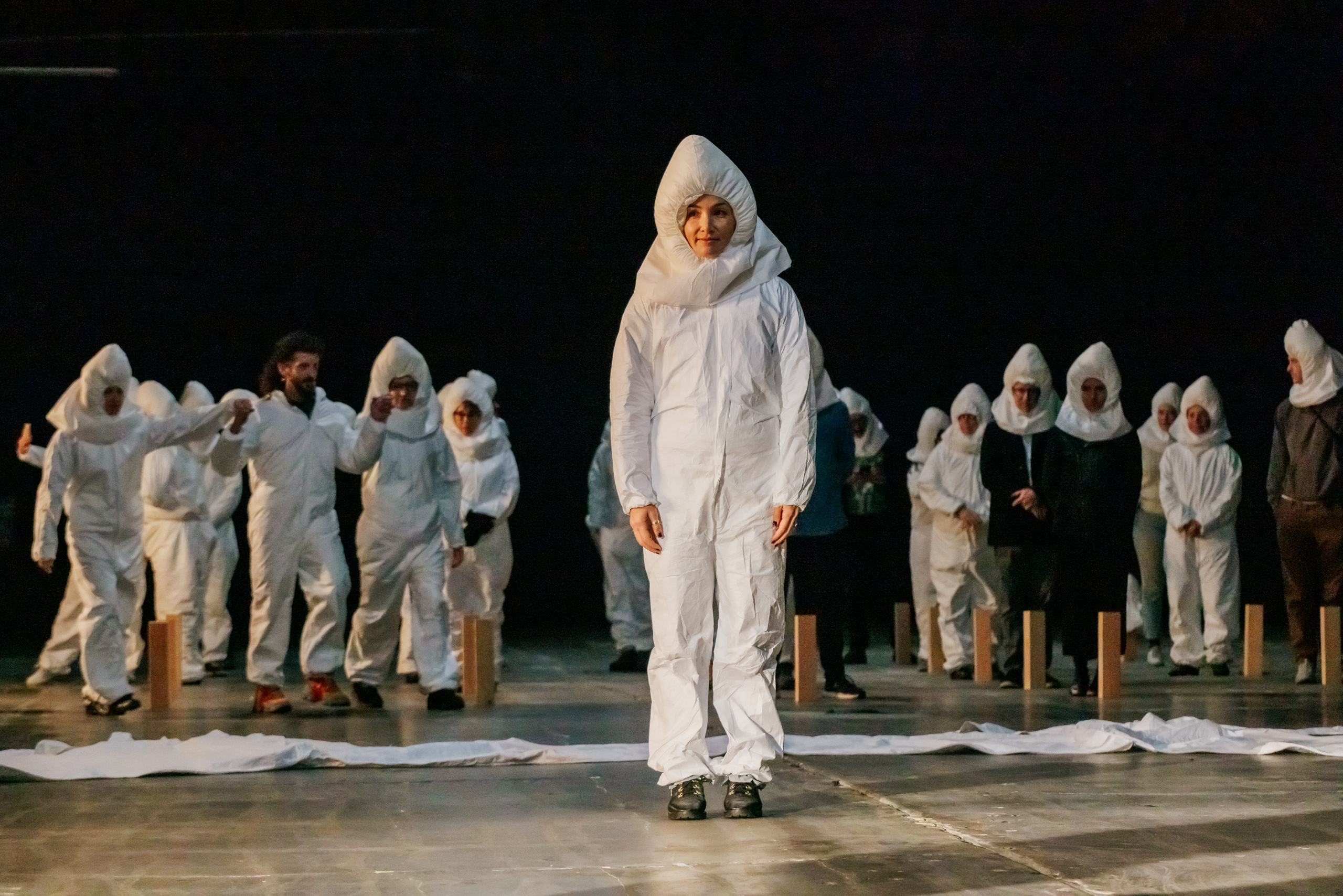

And then, as if to confirm that yes, this is an art installation, and yes, it’s going to get bizarre, the foam started flying. For a second, I thought I’d stumbled into a 90s foam party. Smiles spread across the faces of the participants as they reached for the foam, their hands catching the bubbles like they were at a giant, magical, carnival. Everyone seemed to be having a blast.
But the foam kept rising.

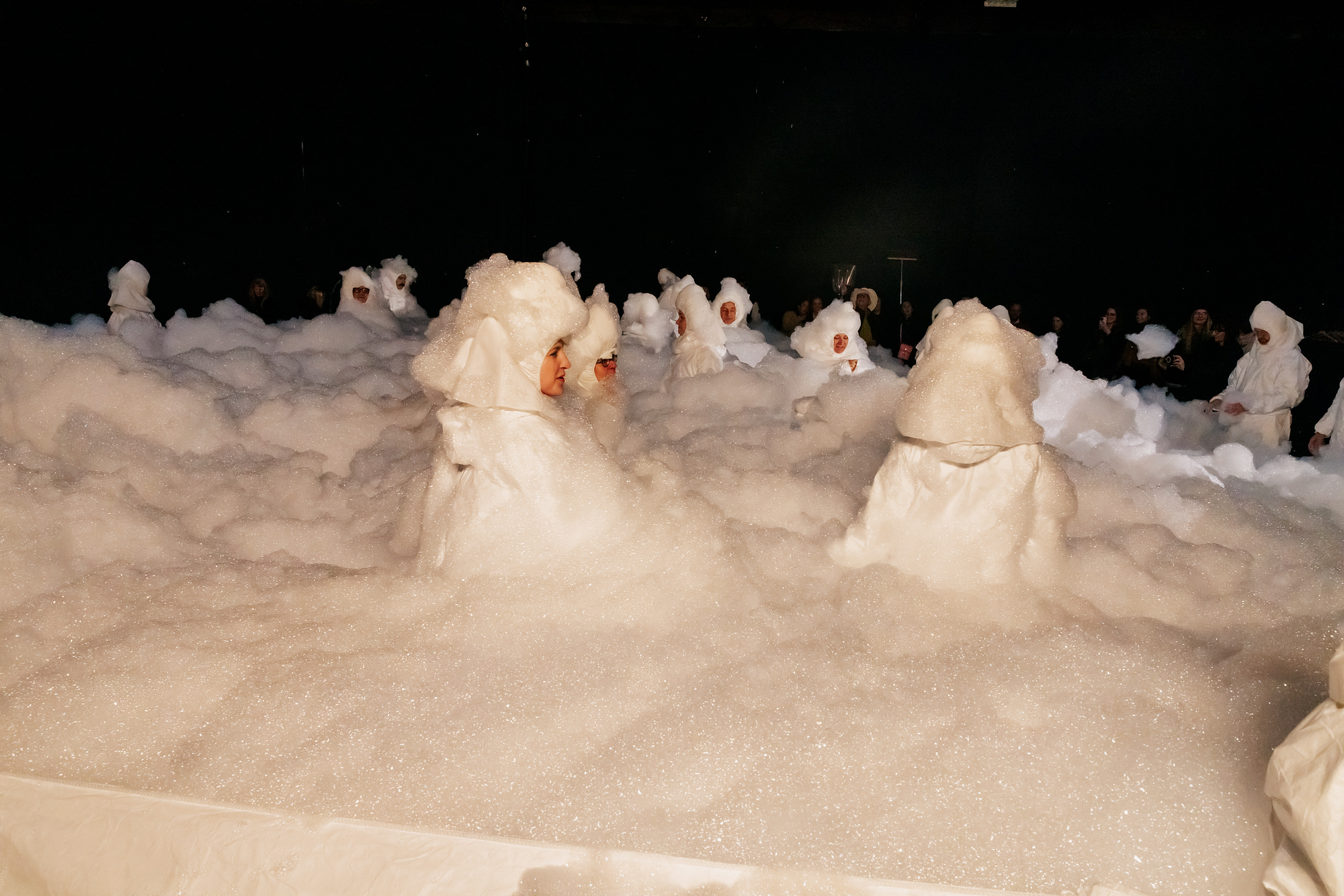
At this point, those of us in the observer zone felt completely left out, holding up our phones like it was our only way to feel like we were in it and not just creepily watching. The bubbles reached up to the participants’ shoulders, and that’s when I noticed something odd — the space was shrinking.
The outer circle of participants had moved in on the inner ones. Suddenly, the smiles weren’t so joyful. The foam didn’t feel fun anymore. Panic began to creep in, especially in the eyes of one woman who tried to escape but was stopped by the barrier. Her eyes locked onto a friend observing from the sidelines, and she flashed a quick, desperate smile. It was too late. I saw it in her face — the fear.
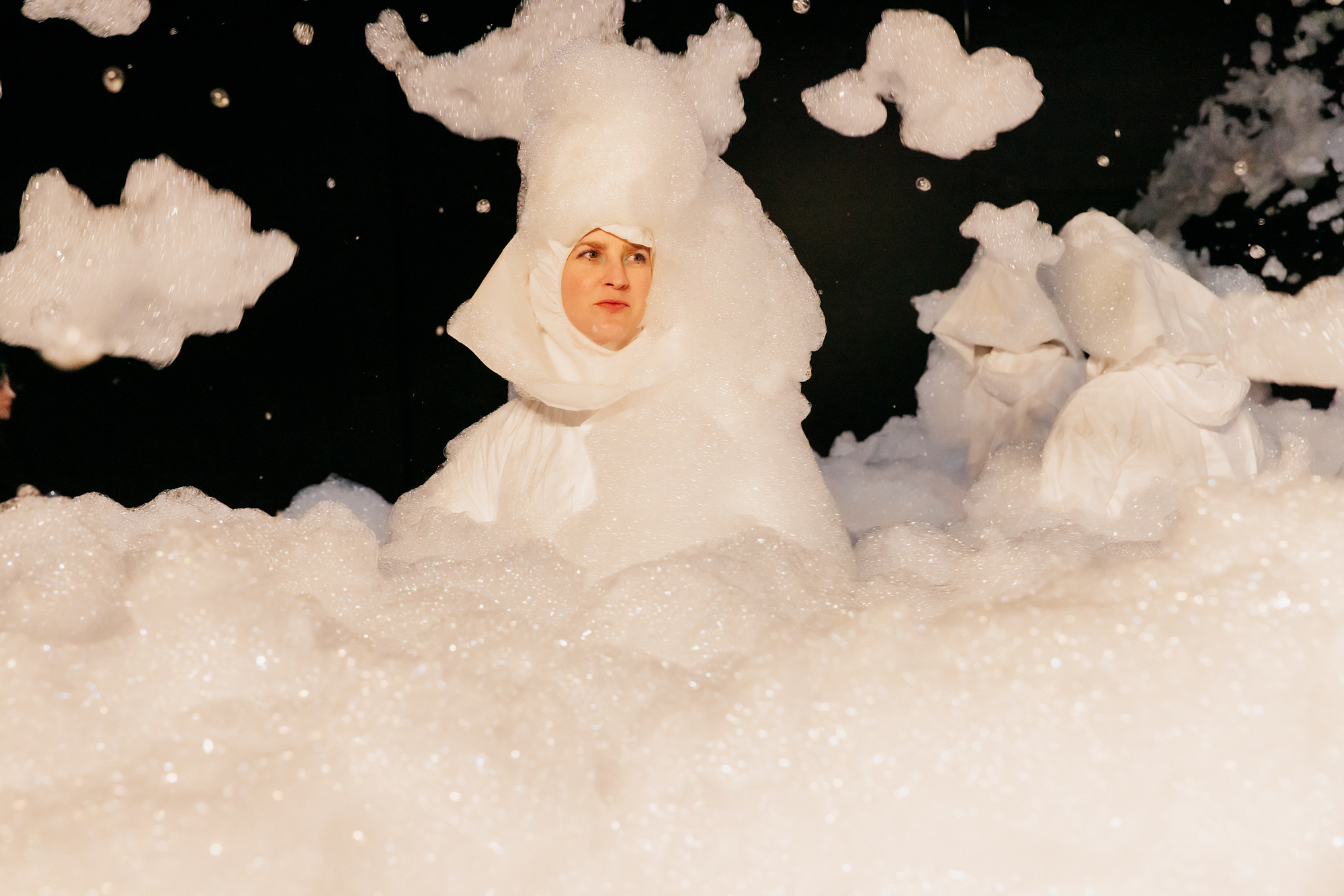
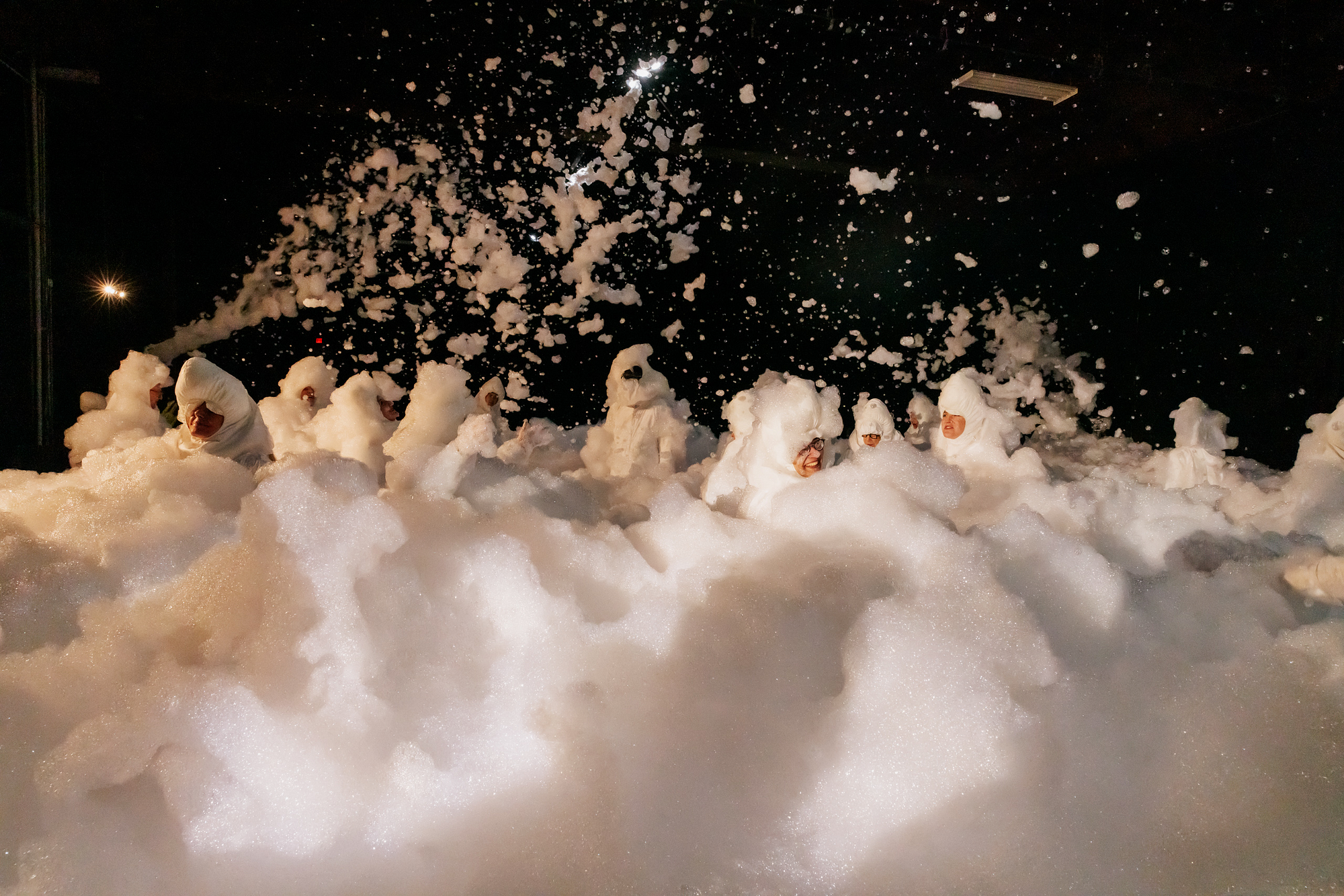
This is where the brilliance of the piece hit me. Like a lobster in boiling water, the participants had been slowly brainwashed by the innocent joy of foam, only to realize too late that they were trapped. It was a subtle, yet profoundly effective commentary on the ways we can be lulled into false comfort, only to have the walls close in around us.
As panic reached its peak, the foam, the sound, the leaf blowers — all of it stopped. Silence. A collective sigh of relief echoed through the space. The participants were told to stay in place and would be “collected” one by one. The experience was over, but the tension lingered.
“Run!” I told my friends. “Let’s get out of here before they start talking about it!” Sometimes, the best performance art is ruined by its explanation, and I didn’t want to stick around for that.
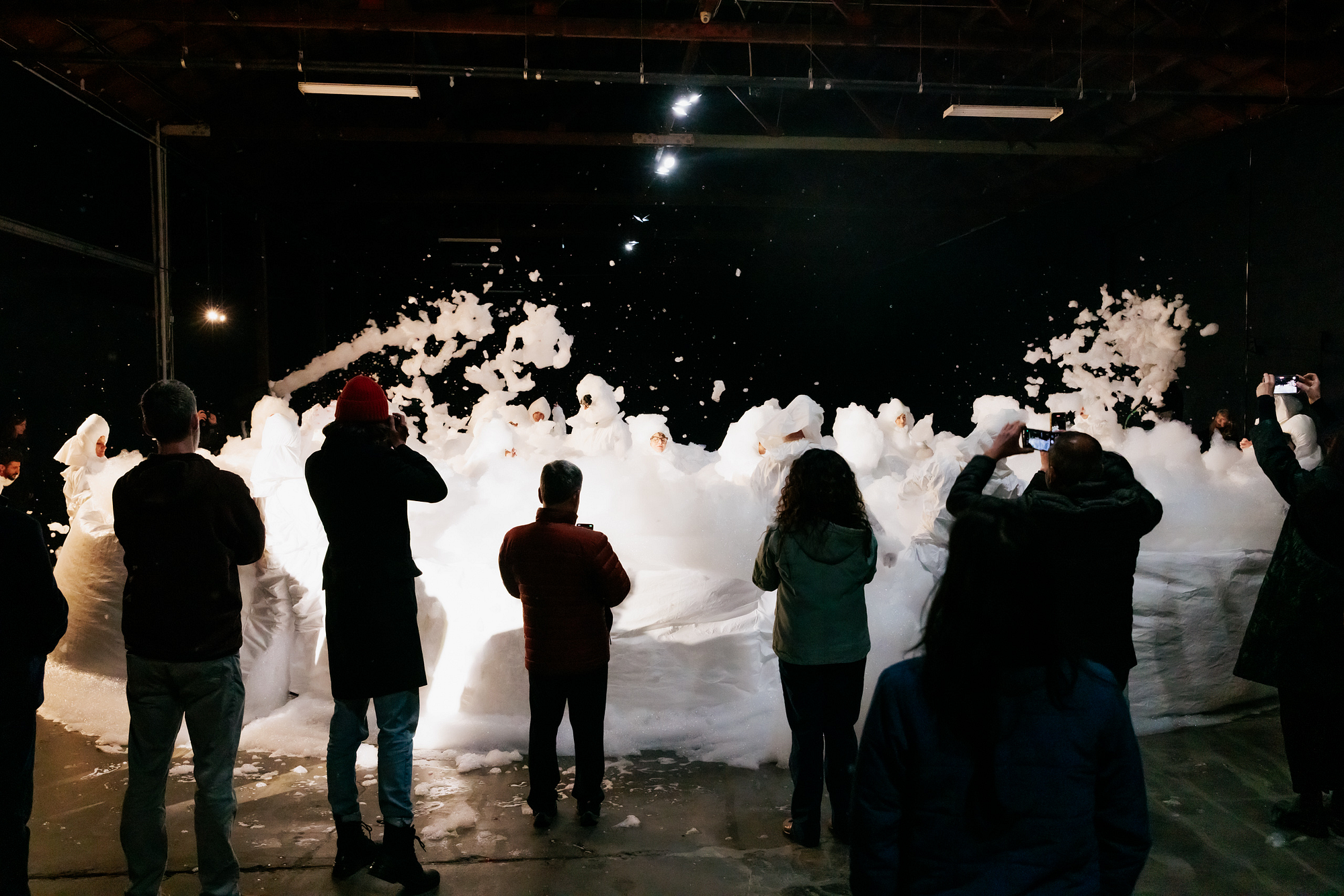
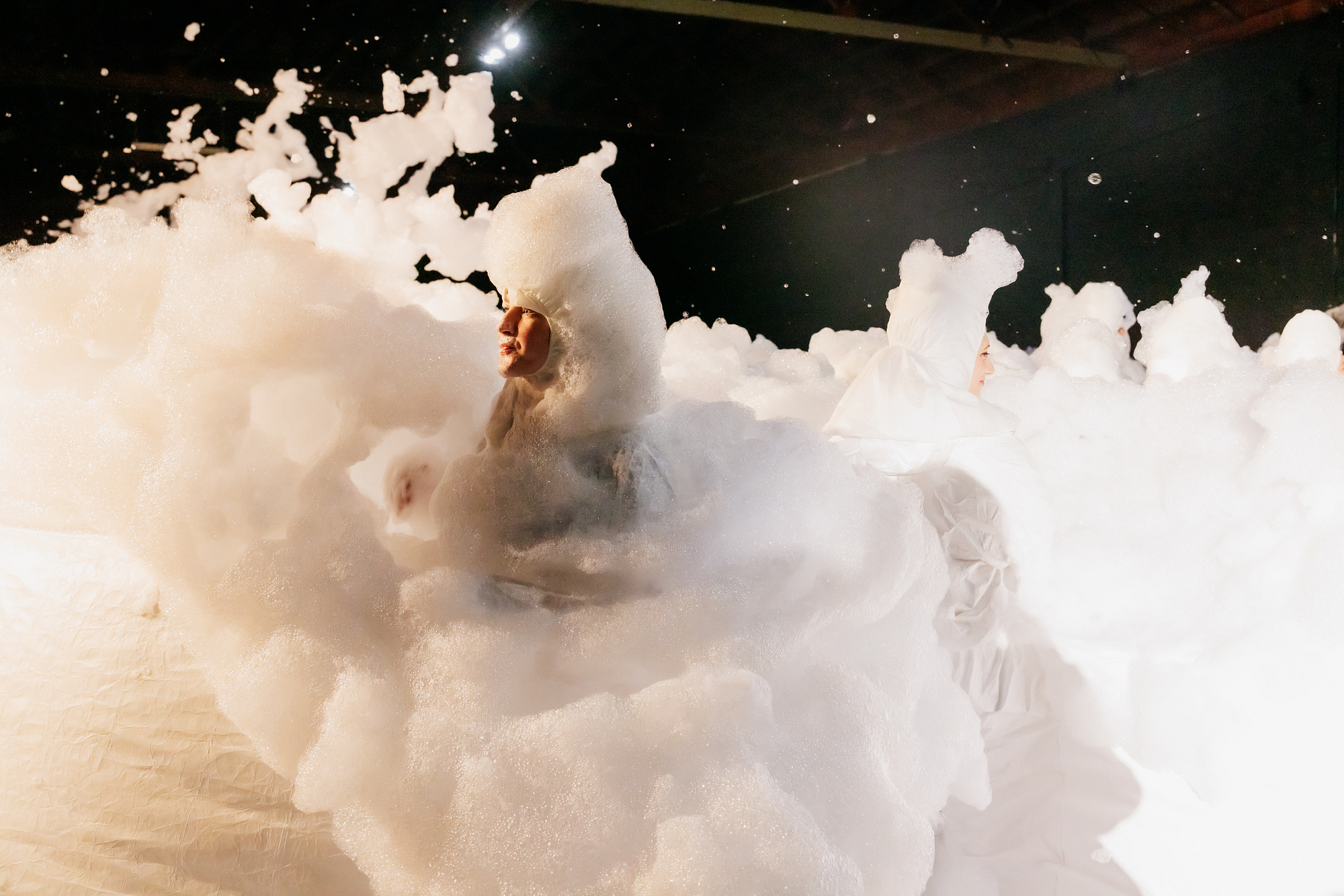
My editor agrees that speechifying is often overdone, but adds that the Eventbrite description confirms much of my experience:
“The performance artfully disrupts visual and physical delineations of space, body, and structure, inviting participants to reconsider their relationship with reality, artifice, illusion, and truth in contemporary culture.”
Self-Brainwashing is on view at the Minnesota Street Project Foundation through February 8, and it’s only $10. If you decide to go (and I do recommend it), I suggest taking someone you have a passive-aggressive relationship with — don’t tell them what it’s about. Just let them experience it. Trust me, it’s worth it.
Vita Hewitt is a Bay Area-based photographer, filmmaker, journalist, and writer.

The Bold Italic is a non-profit media organization that’s brought to you by GrowSF, and we publish first-person perspectives about San Francisco and the Bay Area. Donate to us today.



